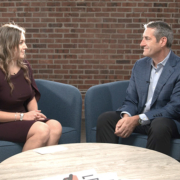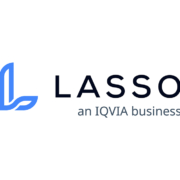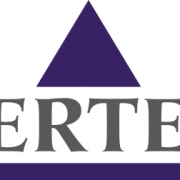Commercial acceleration: A symphony needing a conductor
Commercial acceleration: A symphony needing a conductor
By Rich Glew
Life sciences and pharmaceutical brands understand that increased commercial performance and growth are only possible through optimized customer engagement and satisfaction. Unlike luxury brands marketed as a flattering reflection of consumers’ tastes, healthcare brands are essential, often life-or-death products and services that demand the seamless integration of expertise across multiple specialties, including medical science, marketing and sales, and technology. Despite their mutual dependence and need for continuous collaboration, the broad team of experts required for success often suffer from organizational fragmentation and miscommunication, ultimately compromising a brand’s ability to best advance healthcare.
Systemic breakdowns in operational management, interdisciplinary communications, and data flow occur at every milestone across the healthcare brand lifecycle, for example, when:
- Clinicians and patient experience experts design clinical trials that fail to meet recruitment and retention objectives.
- Scientific experts and marketers create messaging that fails to optimally position and communicate brand differentiation and benefits.
- Marketing and sales teams drive independent campaigns that overlook key audience segments, create confusion, and wasteful redundancy.
- Scientific, operations, and technology experts create customer relationship platforms that silo data and fail to optimize efficiencies.
A descriptive analogy for the challenges and opportunities facing the commercialization acceleration of healthcare brands is that of a symphony orchestra in need of an experienced and proven conductor. Akin to an orchestra consisting of highly trained musicians playing various instruments and requiring coordination, clinicians, content creators, and technologists must work smoothly together to ensure the right patient receives the right therapy, at the right time, and in the right way. The process needs a confident conductor who knows every aspect of the process, healthcare brands need a strategic expert seated with them at the table who understands all the required specialties, and is able to orchestrate their total collaboration.
Examples of seamless cooperation between specialized experts and the benefits of such orchestrated collaboration include:
- Clinicians and patient experience experts design clinical trials that address participant needs for convenience and confidence, boosting trial success metrics
- Scientific experts and marketers create compelling messaging that simply and memorably differentiates a brand and its benefits for all audiences
- Marketing and sales teams drive integrated campaigns that create engaging content repurposed across channels with impressive economy of scale
- Scientific, operations, and technology experts create integrated customer relationship platforms that increase performance and efficiency across the organization
The tough part is finding a conductor to facilitate and empower that commercial acceleration. “Conducting is more difficult than playing a single instrument,” said Pierre Boulez, a world-renowned talent. “You have to know the culture, to know the score, and to project what you want to hear. Some conductors are well prepared but cannot transmit their ideas to an orchestra, and others are good communicators but have nothing to transmit because they are not absorbed enough in the score.” In other words and by analogy, healthcare brand teams, clinicians, marketers, sales managers, customer relationship experts, and technologists each play different instruments, and need that leader in a tuxedo waving a baton to bring it together.
A lifesciences technology client that provides AI-assisted decision support tools for HCPs had a similar challenge orchestrating its experts. Despite showcasing an innovative product and having a strong sales team, the company wasn’t getting sufficient market traction. A four-week discovery process revealed the core problem was not with one specific capability – product, marketing, sales, or customer experience – but a breakdown in the connectivity between them. Specifically, the product team developed features without conducting sufficient market research, resulting in the marketing team developing positioning and a value prop that failed to resonate.
That systemic organizational misalignment cascaded from their flawed brand strategy to core messaging that didn’t engage their intended audiences throughout their multichannel communications channels. The breakdown in connectivity between brand strategy, content creation, and media planning resulted in fragmented, inconsistent messaging rather than a singular, consistent voice. The handoff from marketing to sales was also messy, resulting in decks and sell sheets with content ill-suited for sales calls. The sales team also complained that the marketing team passed them poorly-qualified leads, while the marketing team complained that the sales team didn’t follow up on well-qualified leads in a timely manner. What a mess!
Our company’s role as a commercialization accelerator was analogous to Pierre Boulez description of an effective orchestral conductor: After extensive due diligence we understood the client’s culture, competitive landscape, organizational structure, and the unique capabilities, personalities, and expertise of each specialty. We then mapped the white spaces and gaps, developed a strategic roadmap, and finally executed a commercial acceleration process that improved their connective tissue, aligned all their functions, and seamlessly connected each specialty throughout the commercial engine. The end result re-engineered their internal processes from product to marketing and sales to customer experience to revenue streams.
Our commercialization acceleration plan included:
- Creating a common messaging framework that served as the touchstone for all customer communication
- Improving the lead qualification and lead pass process between marketing and sales
- And building a voice-of-the-customer processes into all aspects of the commercial process, from product development to marketing communications and sales management
Within six months of project initiation, the company’s executive team was thrilled. By approaching their challenges through the lens of operational orchestration and structural reorganization, we were able to conduct the symphony of their commercialization acceleration in a manner that connected their legacy gaps between product development, marketing and sales, customer experience, technology platforms, and revenue generation. Thanks to connecting otherwise disparate specialized functions throughout their infrastructure, we dramatically improved the commercial traction and revenue ramp-up of their product in market. Improvement in the collaboration and relationships between internal teams now enable them to flourish.
In summary, as Boulez pointed out, a capable orchestrator of the local philharmonic or similarly of a healthcare brand’s commercialization initiative must intimately understand the culture and the score, simultaneously excel as subject matter expert and operational coordinator. Such talents are rare, but lifesciences and pharma stakeholders know them when they’ve found them because they understand the foundational pillars of science, behavioral change, and tech, and enable and encourage their seamless and continuous collaboration. By acting as an effective translator or ambassador between specialties, such a “commercialization accelerator” thrives.
Rich Glew is managing director, product marketing and launch, Rebound Communications.










